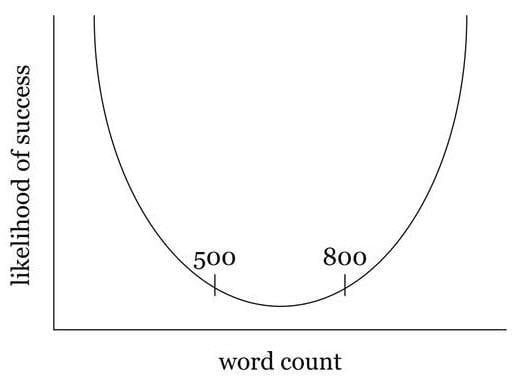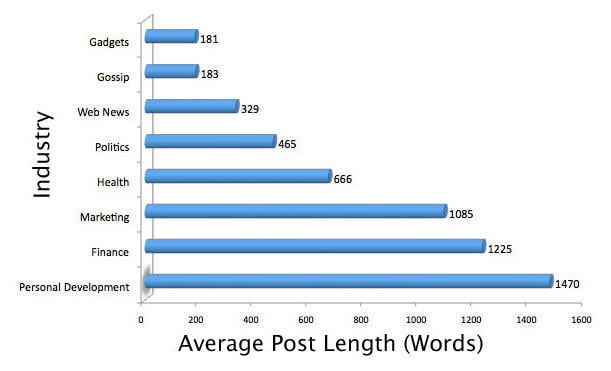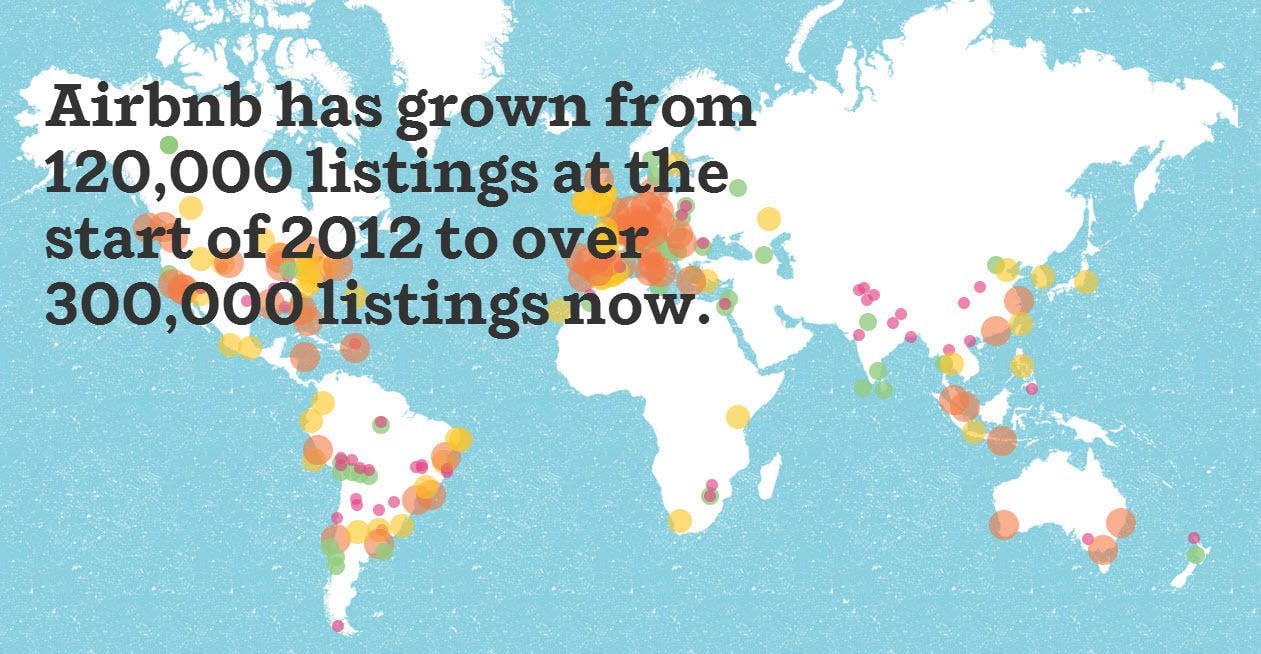Ask two content marketers about long-form content and you’ll likely get two completely different responses. The first might say that long-form content is a gamble, given audiences’ supposedly minuscule attention spans. The other might say that producing longer articles is an excellent way to engage with readers and offer them genuine value and a rewarding experience.
Which of these content marketers is right? Yep, you guessed it – the long-form content evangelist. In this post, you’ll learn:
- What Is Long-Form Content?
- Why Does Long-Form Content Work?
- 5 Long-Form Content Examples
What Is Long-Form Content?
It might seem obvious, but there are many different definitions of what long-form content truly is. Some people consider articles longer than 700 words to be long-form, whereas others think that articles have to be in excess of 1,800 words to be considered long-form. For the sake of argument, let’s assume that long-form content refers to articles of around 1,200 words or longer.
Despite what some content marketers might think, many readers crave meatier articles – and publishers are delivering. For instance, business news site Quartz refuses to publish articles in the typically news-friendly 500-800 word range, because Kevin Delaney, Quartz’s Editor-in-Chief, believes that too many sites adhere religiously to this format. Delaney even developed a model (known as the Quartz Curve) based on article length that forms the basis of the publication’s approach to content:

Why Does Long-Form Content Work?
We used to be skeptics, too. Our average piece of content was around 1,000 words or fewer. We focused heavily on SEO, including keyword optimization. The only problem with this strategy? We were getting a lot of search traffic, but not a lot of return traffic, direct traffic, or brand searches, and our user engagement metrics – stuff like bounce rate and time on site – were pretty low.
So we switched up our tactics a bit and started incorporating more long-form articles into our content strategy. The goal was to increase user engagement – and it worked extraordinarily well.

As you can see in the figure above, the average visit duration for our blog rose steadily from late 2012 – around the time we started producing long-form content. Of course, there are several other factors that contributed to this rise, including better content promotion and a healthy dose of contrarian content, but creating longer, more in-depth content that provides tons of value to our audience has been a very successful part of our content strategy; one that resulted in tripling our average time on site from 1:33 to 4:35.
In fact, some of our longest posts have been our most successful. For example: Our most popular post of the past year, “Find Your Old Tweets: How to See Your First (Worst?) Tweet,” clocked in at over 2,300 words. It’s been viewed over 100,000 times just in the past few months, with average time on page of almost 8 minutes!
Long-form content can also have a positive impact on a page’s rank in the SERPs. In the figure below from serpIQ, you can see that the top-ranked content is around 2,450 words – definitely not light reading!

Long-form content isn’t just rewarded by the search engines – it also resonates with readers.
Blog platform Medium compiled data on its most successful articles by measuring the average time on page in relation to post length and the amount of time it takes the average reader to finish the post. Based on this data, the ideal blog post takes seven minutes to read and is around 1,600 words long:

Content length can also be determined by the subject matter. Marketing blog ViperChill put together some data on the average word length of a random sampling of blog posts categorized by industry, which makes for interesting reading:

5 Examples of Excellent Long-Form Content
So, now we’re (roughly) on the same page, let’s dive into what great long-form content looks like. Most of the frequently cited long-form content out there tends to be journalism (think the image-rich features you can see in The New York Times), but these examples show how brands and marketers can use this type of content to their advantage, generating traffic, leads, and brand value.
1. IBM – ‘Memphis P.D. Case Study’

“Big Data” has become one of the tech sector’s most beloved (and frequently abused) buzzwords. Although everyone and their grandmother seems to be “into” big data, few people can provide a solid example of how large-scale data analysis can actually be used. IBM, one of the major players in big data, realized this and set out to show, not tell, how big data can make people’s lives better in a case study focusing on the Memphis police department.
Rather than waxing lyrical about its impressive technology, or bombarding the reader with technical specifications, IBM took an alternative approach by telling a story; in this case, the struggles experienced by Larry Godwin, Director of Police Services for the Memphis P.D (PDF).
Just as effective PPC ads appeal to prospective customers’ desire to solve problems, the IBM case study outlines Godwin’s difficulties in fighting crime in light of a dwindling budget, rising crime rates and an increasingly cynical populace, before explaining how the application of IBM’s predictive analysis technology helped the Memphis P.D. become more effective by identifying areas in which criminal activity was more concentrated – but not necessarily related in a way that officers may have been able to piece together.
Why It Works
IBM understood that producing a bland, corporate puff piece wouldn’t win them any customers or pique people’s curiosity about predictive data analysis. Most people don’t care about how the technology works – they’re more interested in what it does. By showing how its technology had a direct impact on the lives of Memphis citizens, IBM highlights the potential of predictive analytics and grounds the story in the lives and struggles of real people.
2. Chevrolet – 100 Years of Icons
Some of the best examples of long-form content come from brands. Case in point, Chevrolet’s “100 Years of Icons,” a journey through time with one of America’s most instantly recognizable brands.
Beginning in 1914 with the Royal Mail Roadster, the article chronicles not only the development of new automotive technologies during the past century, but also the unique position the Chevrolet brand occupies in American culture. The piece features striking images of Chevy’s most iconic vehicles to accompany the surprisingly modest copy, including photos of classic models like the El Camino, Camaro and Corvette.
Why It Works
This example is particularly clever, as it not only provides gearheads with lots of information about the specifications of each vehicle (including horsepower, the number of cylinders each engine had and the sticker value at the time of release), it also reinforces the concept of longevity – not just of the Chevrolet brand, but of the manufacturer’s individual vehicles. By taking the reader on a journey through the brand’s history, Chevrolet appeals to consumers’ desire for a reliable and stylish car in an entertaining and informative way.
3. Patagonia – Climbing in Iceland with Loki the Deceiver

Patagonia is one brand that really “gets” long-form content.
Although Patagonia is essentially just another activewear apparel brand, its content strategy sets it apart from its competitors. Posts like this example perfectly demonstrate how providing interesting long-form content can be genuinely compelling and a great way to build a brand.
In “Climbing in Iceland with Loki the Deceiver,” Kitty Calhoun, proprietor of women’s ice and rock climbing organization Chicks Climb, tells the story of how she and three other climbers embarked on an adventure to the heart of the Icelandic wilderness. The post reads like a professional travelogue, and is accompanied by photos taken by Calhoun and her traveling companions, each revealing a glimpse of Iceland’s grandeur and mystery to the reader.
Far from a self-indulgent tale of a glamorous winter sports expedition, Calhoun’s post reveals the difficulties she and her fellow climbers experienced during their trip, including brutal weather conditions, dangerous climbs and the trepidation that comes with braving the unknown – all classic ingredients of a compelling story.
Why It Works
Patagonia knows that creating an immersive experience for the reader is an excellent way to establish credibility and appeal to their ideal customer’s sense of adventure. This post doesn’t try to sell anything; not once is Patagonia’s apparel even mentioned. What this post accomplishes is showing readers how Patagonia customers live their lives; it appeals to their competitive spirit and desire to tackle exciting new challenges. The post itself also happens to be a fascinating read, even if you’re not an outdoor sports enthusiast.
Even the author’s bio makes a statement. Calhoun is referred to as a “Patagonia ambassador,” reinforcing the idea that Calhoun (and others like her) are bold explorers who stand behind the quality of Patagonia’s products – not just people who buy down winter jackets.
4. Quick Sprout – The Definitive Guide to Growth Hacking

Neil Patel, founder of KISSmetrics and Crazy Egg, knows a thing or two about how to launch and grow startups. In our fourth example of long-form content, Patel and co-author Bronson Taylor essentially give away everything they know about growth hacking.
This eBook is divided into 10 chapters, each focusing on a different aspect of growth hacking. Available as an online resource or downloadable PDF, this guide covers a range of topics in great depth, from pull/push tactics and the growth hacker funnel to driving engagement and user retention. The guide doesn’t just explain what these concepts involve – it provides actionable examples of how readers can apply these techniques to their own ventures, making it a remarkably useful resource.
Why It Works
Patel and Bronson made a conscious decision to share their knowledge freely. They could have easily placed the downloadable guide behind a web form to generate leads – but they didn’t. This simple act makes the guide tremendously accessible, an important consideration for content producers.
As one of the lengthiest of our examples of long-form content, this guide also demonstrates that Patel and Bronson also gave a great deal of thought to their content’s ideal format. They didn’t hamstring themselves by forcing everything into a blog post, or cutting corners to reduce its overall length. Instead, they chose to give the content as much room as it needed – something many content marketers neglect to do.
Finally, both Patel and Bronson are experts in their field. This lends the content an air of authority, and further establishes them as thought leaders in the startup world.
5. Airbnb – 2012 Annual Report

Few pieces of corporate collateral are as dull as the annual report. However, Airbnb decided to take a fresh approach to showcasing the company’s impressive growth by making an interactive annual report that shows even the blandest corporate documents can be transformed into exciting and compelling long-form content.
At first glance, Airbnb’s annual report doesn’t look like long-form content. Delve a little deeper, though, and you’ll be rewarded with a treasure-trove of fascinating data about the company’s expansion.
In addition to information that investors would want to see, Airbnb’s annual report also features real stories from people who have used the service, including travelers and hosts. Audio files and images of Airbnb users telling their own stories are embedded directly into the page, allowing readers to scroll through the company’s growth from 2012 to 2013 and experience how guests and hosts alike have benefited from the remarkable cultural exchanges made possible by Airbnb.
Why It Works
The success of this piece of long-form content lies solely in how Airbnb’s creative team made a traditionally boring document into an interactive story of growth. Visually, the report is bright, engaging and presents a great deal of information in an easily understandable way, but it doesn’t skimp on the hard data that an annual report needs to have, either.
The inclusion of user stories provides a much-needed human element to the report – for a business centered around people and travel, a list of statistics (no matter how impressive) just wasn’t going to cut it. Airbnb decided to show investors how people’s lives have been changed by the service, not just tell them.
Hopefully this post has given you some ideas for your own content projects, and why long-form content should be an integral part of your content strategy.







